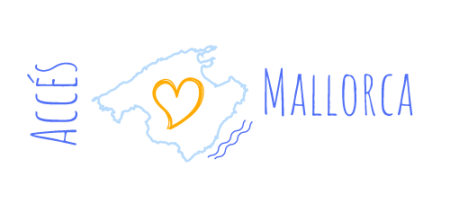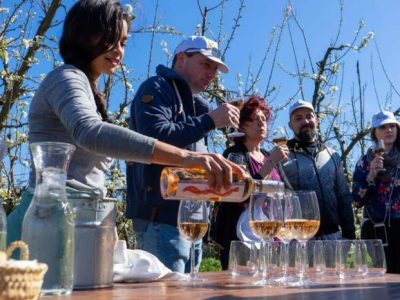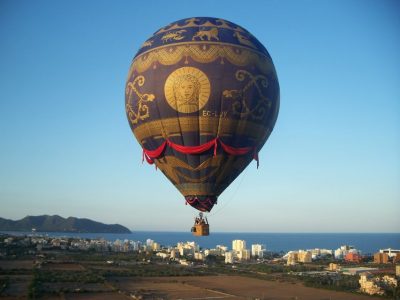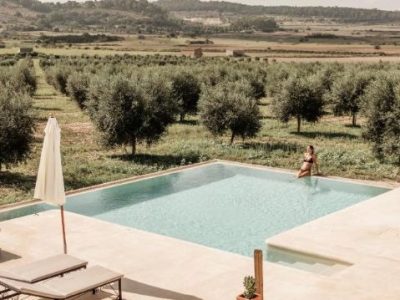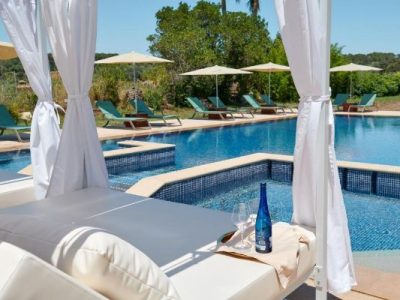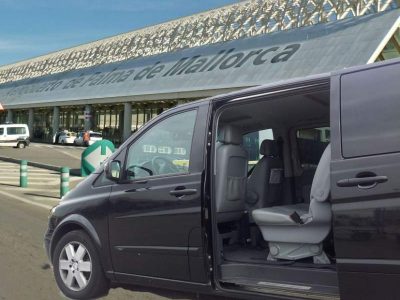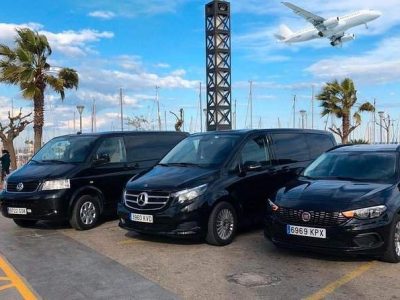All your holiday planning needs in one place, letting you book direct and benefit from official online rates
- Places To Go
- Things To Do
What’s Your Interest?
Traveling with kids
- Blog
Sant Joan, Mallorca, Things to do and see, hotels, market
- This is where I want to go!

Why visit Sant Joan
Things to do in Sant Joan
ELS CALDERERS
The overall attraction of Sant Joan, and most of the Pla region, is the imposing finca of els Calderers. During your visit, you will see and learn about the life on a farm in the Middle Ages. You will be passing through the many rooms, wine celler, men’s lounge, women’s lounge, hunting room, kitchen, bedrooms etc. At the attic there’s a splendid collection of machinery and tools used at the farm that has revolutionized the agricultural production in all of Mallorca. Outside, enjoy a nice stroll in the gardens and visit the donkeys and black Iberian pigs. A visit to the els Calderers is an activity the entire family can enjoy.
SANTUARI DE BONANY
Ascent to the summit of the Bonany hill parting the three municipalities of Sant Joan, Vilafranca and Petra, and enjoy the divine panoramic views of the Mallorcan countryside all the way to the bay of Alcúdia. On the top of the hill, in 245 meters altitude, discover this ancient place of veneration and hermit lifestyle that has resulted in a beautiful church and hermitage.
SANTUARI LA MARE DE LA DÈU DE LA CONSOLACIÓ
Come discover this holy place rising high above the rooftops of Sant Joan. At the hill of Puig de Consolació lies the monastery of same name built on top of the first chapel from the 13th century. From up here, take in the stunning views of Sant Joan town and the charming surrounding areas of fields and green hills. Every year, on the fourth Sunday of Lent, the town’s people walk to this monastery to celebrate their traditions eating bread and fish.
PAROCHIAL CHURCH OF SANT JOAN
The parochial church of Sant Joan is as imposing from the outside as it is on the inside. Impressive wooden carvings, religious artworks and multiple architectural styles are some of the key features of this church that has been expanded many times since the original construction was erected back in the Middle Ages. Inside, you will also find the parochial museum, a great exhibition of religious art collected and donated.
CENTRE CATÓLIC
The old catholic center of Sant Joan was built in 1922, a project founded by Monsignor Francesc Mas Galmés, rector of Sant Joan. The catholic center was meant as a social and cultural center which included a theater, but could also house the rectory of the town. The building is crowned with a statue of Fray Luís Jaume Vallespir, a son of Sant Joan whom was killed in 1775 in California during a mission.
WINDMILLS OF SANT JOAN
Wheat is one of the most common products of Sant Joan, and in the urban nucleus of the town you can enjoy 6 of the old windmills hidden in the streets. Here we reveal the addresses of the old mills for you to enjoy.
CASA PAIRAL DE FRA LLUÍS JAUME VALLESPIR
This was the home of Fray Lluís Jaume Vallespir, whom died a martyr in California in 1775. The small and modest house witnesses a humble lifestyle of a person dedicated to religion. On the building façade is a memorial plate in honor of him.
SA BASTIDA
Enjoy a relaxing walk or bicycle ride in the rural countryside air of Sant Joan and pass by this historical property that was the very foundation of the town.
FAQ
Here are the best accommodation options in Sant Joan:
Sant Joan is located in the central part of Mallorca, approx. 36 km (~22 miles) from Palma airport. The transfer time by car or taxi is about 25-30 minutes.
A taxi from the airport will cost about 40-50 euros.
If you prefer a more comfortable transfer, consider an air-conditioned private minibus. Book here
Sant Joan weekly market is held every Thursday morning from around 8 am to 1 pm.
Market and Events in Sant Joan
Weekly market in Sant Joan
The weekly market in Sant Joan is held on Thursdays from 8 in the morning in the heart of the town next to the parochial church.
Events and festivities inSant Joan
January
Festes de Sant Antoni
On the night of January 16, the town of Sant Joan celebrates the patron saint of domestic animals, Saint Anthony. Bonfires are lit all over the town and traditional music is played in the center square.
February
Sa Rua
Sa Rua is the celebration of carnival in Mallorca and in Sant Joan there will be parades of curious and colorful costumes, along with dancing and traditional Mallorcan music.
March
Festa del Quart Diumenge / Es Pa i el Peix
In March, on the fourth Sunday of Lent (Quart Diumenge), one of the most beloved traditions is held in Sant Joan. Accompanied with the sound of the Mallorcan xeremiers (bagpipes), the people walk together to the sanctuary of Mare de Déu de la Consolació outside town, where coquettes and fish is served according to the tradition that has existed since the 16th century. A mass is held and flowers are offered to the Virgin of Consolation, and afterwards various activities and dance performances happens here.
April
Easter Monday
On Easter Monday, the inhabitants of Sant Joan gather to walk by foot to the sanctuary of Bonany to have a mass and picnic. After the mass, popular folk games start and various performances are held. Traditionally, on this day the leftover bread from Easter is eaten, however, nowadays fresh sandwiches and delicious rubiols de Mallorca (pastry) is eaten here.
Festa del Llibre
On April 23, the organization of Obra Cultural Balear organizes a book event in Sant Joan.
June
Sol que Balla
June 24 is a special day in Sant Joan, especially to the youngsters of the town. This is the end of a school year and the kids meet and go to the sanctuary of La Mare de la dèu de la Concolació to watch the sunrise as the bells of the parochial church plays for them. Until 1919, this day was celebrated as the day of the patron saint, but to the peasants this was the time of the harvest so they did not have time to celebrate, so instead they celebrated on August 29, which is now the official day of the patron saint.
August
Sant Joan Degollat
On August 29, it is time for the town of Sant Joan to celebrate itself. Exhibitions, games, concerts, performances, contests and plenty of food are the key ingredients in this festive tradition that gathers the entire town.
October
Festa del Botifarró
This is a great event to look out for if you are on the island at this of the years, and, you like sausage. This day is dedicated to grilling traditional Mallorcan sausages and serving them with pies. There are typically a lot of dancing and music to experience as well.
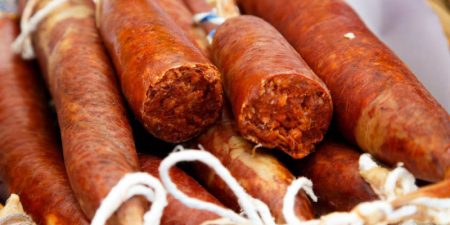
Support Local
Supporting local communities during your travels can have a profound impact. Stock up with groceries locally, stop in an artisan shop or enjoy a refreshment at a restaurant or bar. Now more than ever, these small businesses need support from travelers near and far.
Get to know the area of Sant Joan
About the area of Sant Joan
Sant Joan is the quintessence of a rural and agrarian area in the Mallorca countryside.
Typical products of Sant Joan
- Garlic
- Wheat
History of Sant Joan
About 42 archaeological sites has been found in the area of Sant Joan during the years, unfortunately, most of them in a very poor condition. Among the sites dating from the Pre-Talayotic era (2,400 BC), some of the most significant founds are the caves of de la Bastida, del Camp Rafal, dels Calderers, and la coveta del Camp Vell. From the Talayotic period (1,100-300 BC), the necropolises of Carrutxa and Son Gil are the most interesting.
Evidence of Roman occupation is present too, especially the artifacts found in Son Munar, el Pujol, el turó de Pinyella and Puig de Sant Onofre. However, it is quite unlikely that there has been a Roman village in the area.
During the Islamic era (902-1229/32), the Moorish emirs divided the island in twelve districts, so called “Juz’s”. The area here was located in the most southern part of the district of Yiynau-Bitra, which also comprised the current municipalities of Sineu, Petra, Ariany, Lloret de Vistalegre and Vilafranca de Bonany. The Moors settled in farmhouses and huts scattered all over the area, from where they were able to cultivate the lands by building some of the first hydraulic systems like water tunnels and wells, the so-called quanats. Some of the most well-documented farms from the Islamic era are the Alhamar, Binifarda and Maham.
When the Catalan army conquered the island in the years between 1229 and 1232, the king distributed the districts and lands among knights and bishops. The new landowner was Pere de Palau, however, already in 1235 the area passed on due to either death or exchange. The area was given to Arias Yánez, a knight of Portuguese Sant Joan de Verí from Coïmbra. From the farm and lands of the Alhamar, a small community started to slowly grow and changed name to Sant Joan de Sineu. The new Christian settlers were quick to mark the new religious dominance, and already in the 1240’s the first chapel was established on the hill of Puig de Consolació. Until 1298, this chapel was under ecclesiastical management of the parochial church of Santa Maria in Sineu, but thanks to Bishop Ponç de Jardí a segregation was possible and the permission to build a new church in Sant Joan was granted. Moreover, the segregation and establishment of a parish church in Sant Joan came from a quickly growing congregation which was evidenced just a few years later. In the year 1300, King Jaume II of Mallorca signed a set of ordinances which stated that any urban area of at least 100 inhabitants was given the rights to establish a town council and the right to trade products at the market. This was the official establishment of the town of Sant Joan.
The Middle Ages brought several crises to Mallorca; plagues, droughts and societal turbulence as the most remarkable. During 1521 and 1523, a rebellious movement formed in Mallorca as a reaction to a severe debt to the crown from prior conflicts, which made it almost impossible for craftsmen and peasants to earn money. Many locals from the town of Sant Joan participated in the revolution fighting for the rebellious army. Sant Joan took great damage during the clashed between peasants and the royal army that was sent to the island to stop the chaos, leaving the town in massive debt and a highly reduced population.
As earlier stated, Sant Joan is a municipality quintessence to agriculture, this is partly manifested in the finca els Calderers, a manor that became renown all over the island for introducing new techniques. The introduction of new machinery and techniques at els Calderers revolutionized the entire agrarian community of Mallorca. Today, els Calderers serves as a ethnological museum where you can examine all these tools.
Today, Sant Joan is still one of the only places in Mallorca where agriculture predominates the main occupation in the area. Tourism is limited to but a few agroturismos scattered over the rural countryside.
Practical Info
Useful Numbers
Emergency: 112
National police: 091
Local police: 092
Guarda civil: 062
Fire: 080
Maritime emergencies: 900 202 202
Town Hall: +34 971 52 60 03
Public Transport
Bus lines: 442
Power Supply
220V
